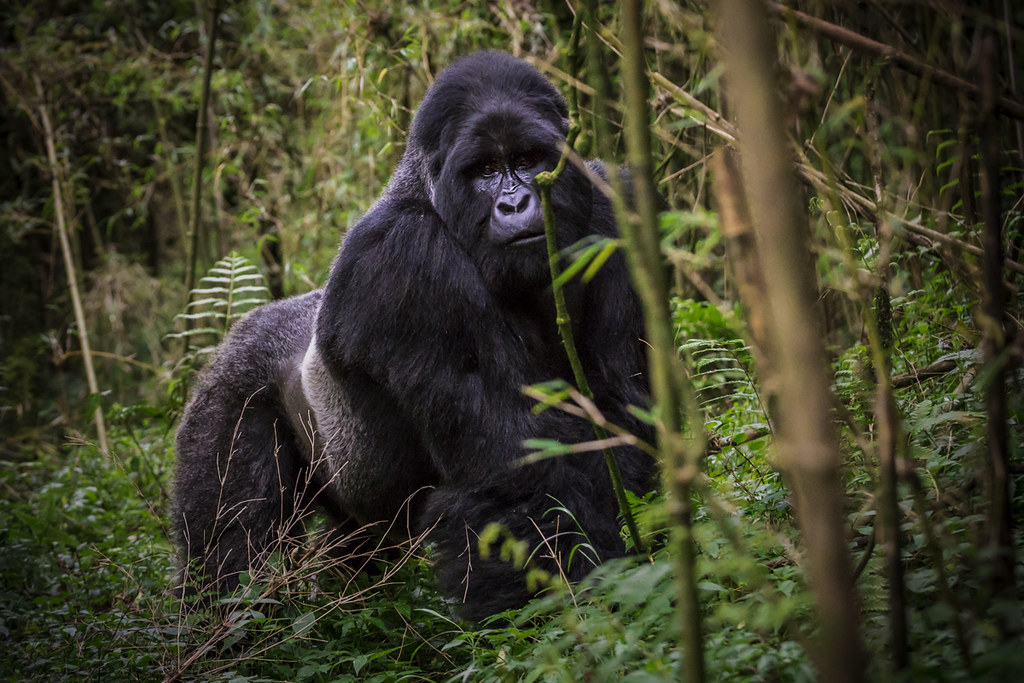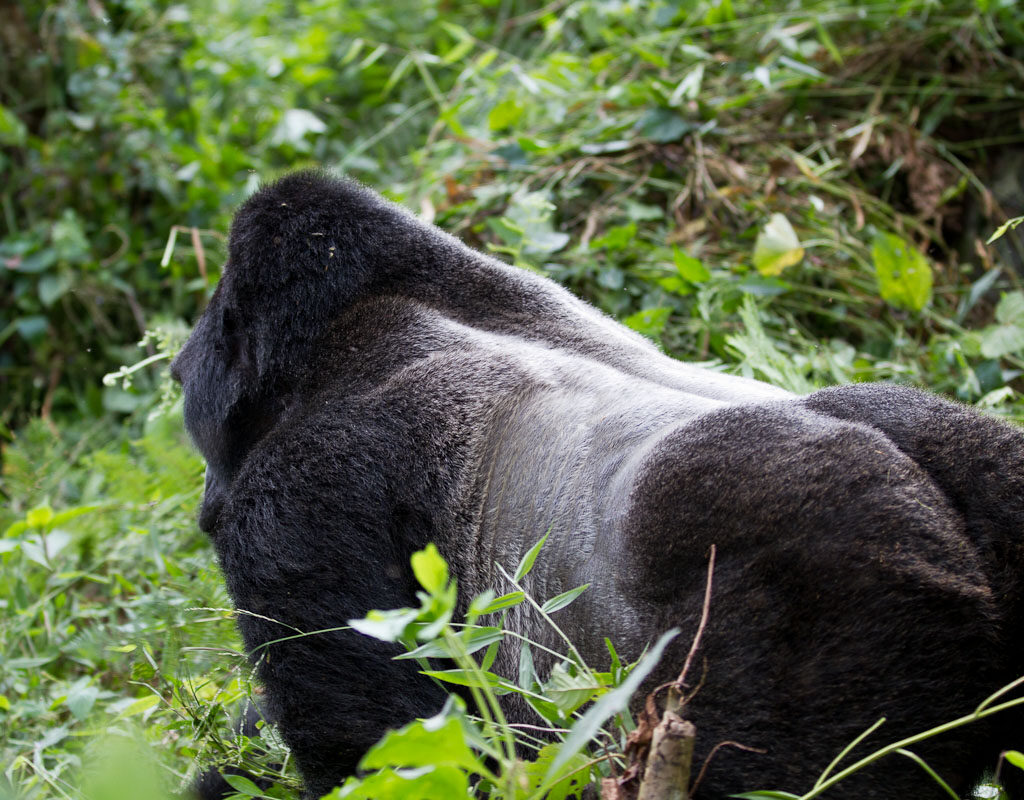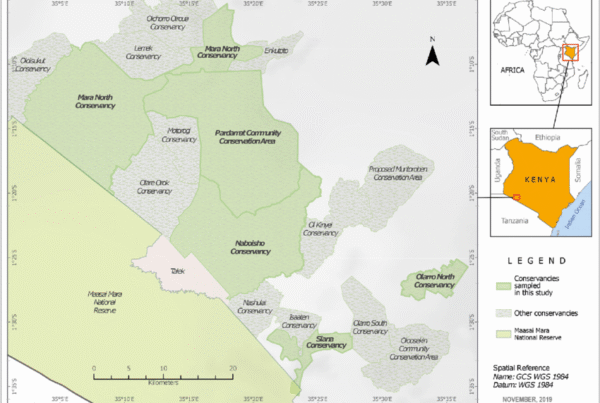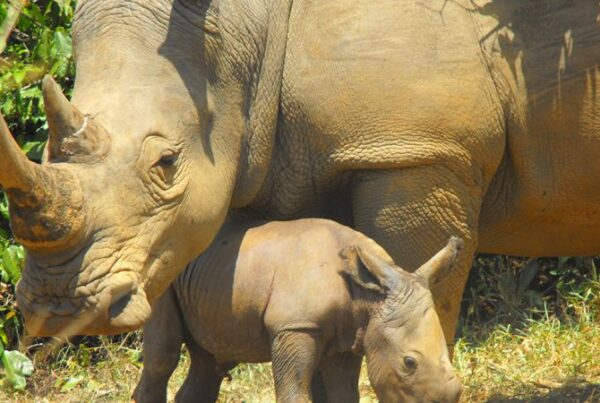Silverback Gorilla Trekking in Uganda
A Journey into the Heart of the Wild
Deep in the lush mountains of Uganda, where mist lingers over towering forests and the calls of exotic birds echo across valleys, lies one of the most profound experiences of the natural world. This is the realm of the silverback gorilla, a guardian of the highlands whose presence commands awe and reverence. To embark on silverback gorilla trekking in Uganda is not to take part in an ordinary safari, but to enter a sanctuary where humanity encounters its closest relatives in an atmosphere of quiet wonder.
Uganda, often celebrated as the “Pearl of Africa,” holds nearly half of the world’s remaining mountain gorillas within its borders. The forests of Bwindi Impenetrable National Park and Mgahinga Gorilla National Park serve as havens for these magnificent primates, protecting them within landscapes of breathtaking beauty. Trekking through these forests offers an experience that is both intimate and transformative. It is a journey that demands effort, patience, and respect, yet rewards with memories that linger long after the trek has ended.
The silverback, leader of his family, symbolizes the strength, wisdom, and resilience of the species. To meet his gaze within the shadowed forest is to feel a connection that transcends barriers, reminding humanity of shared origins and mutual vulnerability. This encounter is more than wildlife tourism; it is a moment of reflection on conservation, coexistence, and the fragile harmony of life on earth.
Uganda: The Home of Mountain Gorillas
Uganda is uniquely positioned within the Albertine Rift, a region celebrated for its biodiversity and dramatic landscapes. Within its borders, two parks stand as global strongholds of gorilla conservation. Bwindi Impenetrable National Park, sprawling over more than 330 square kilometers, is a UNESCO World Heritage Site renowned for its ancient montane forests. Its dense vegetation and steep ridges provide sanctuary for multiple gorilla families, each led by a dominant silverback.
To the south lies Mgahinga Gorilla National Park, smaller in size but equally rich in significance. Nestled within the Virunga volcanic range, its bamboo forests and alpine meadows provide a different yet equally enchanting environment for gorillas. Here, the Nyakagezi family, with its charismatic silverbacks, has become one of the highlights of gorilla trekking in Uganda.
These two parks complement each other, offering visitors diverse experiences of landscape, vegetation, and wildlife. Together, they hold a responsibility that is global in scope: the protection of a species that once hovered on the brink of extinction but now shows signs of resilience through dedicated conservation efforts.
The Silverback Gorilla: Leader and Protector
The silverback gorilla stands at the heart of every gorilla family. His name arises from the distinctive silver-gray hair that adorns his back as he reaches maturity, usually at around twelve years of age. Beyond appearance, the silverback embodies authority and guardianship. He is both the decision-maker and protector, guiding his group to feeding grounds, defending them against threats, and maintaining harmony within the family unit.
Physically, the silverback is a figure of immense power, weighing up to 180 kilograms and capable of remarkable strength. Yet his behavior is marked not solely by dominance but by care and restraint. He often tolerates the playful antics of younger gorillas, shows tenderness to infants, and relies on vocalizations and gestures to maintain cohesion. This balance of strength and gentleness makes the silverback a symbol of leadership rooted in responsibility rather than fear.
To encounter such a figure in the wild is to witness nature’s complexity. His watchful gaze, unhurried movements, and commanding presence reveal a creature at once ancient and deeply connected to humanity. In his eyes lies a reflection of human ancestry, a reminder that the distance between species is narrower than often imagined.
Preparing for the Trek: The Journey Before the Encounter
The path to a silverback encounter begins with careful preparation. A gorilla trekking permit, secured through the Uganda Wildlife Authority, is essential. These permits are deliberately limited in number to ensure minimal disruption to the gorillas and to maintain the integrity of their habitat. The investment not only secures access but also contributes directly to conservation and community development.
On the day of the trek, visitors gather at designated park headquarters where rangers conduct an extensive briefing. Guidelines are explained in detail: a minimum distance must be observed, physical gestures must remain calm, and a strict one-hour viewing window is enforced once the gorillas are located. These measures are not arbitrary but are vital for the health and well-being of the gorillas, who remain vulnerable to human-borne diseases.
Physical readiness is emphasized, for the trek can be demanding. Trails wind through steep ridges, slippery slopes, and tangled undergrowth. Elevations ranging from 1,200 to over 2,600 meters add to the challenge, while sudden changes in weather demand endurance. Porters, available to assist, not only ease the burden but also offer meaningful support to local livelihoods, reinforcing the interconnectedness of conservation and community.
The emotional journey begins here as well. Anticipation builds with each passing moment, the forest beckoning with both mystery and promise. It is not only a trek but an immersion into a world where patience and reverence prepare the heart for what lies ahead.
The Trekking Experience: Steps into the Silverback’s World
As the trek begins, the forest opens its secrets slowly. Light filters through dense canopies, the air grows heavy with the scent of earth and vegetation, and every rustle in the undergrowth quickens the pulse. The guides lead with precision, following signs of gorilla presence: broken bamboo, fresh droppings, or nests left from the previous night.
Each step draws the group deeper into the gorilla’s domain, and anticipation rises with every clue. Then, as though revealed by the forest itself, the silverback emerges. His figure towers above the undergrowth, his silver saddle gleaming against the backdrop of green. Around him, his family moves with quiet assurance—mothers nursing infants, juveniles tumbling in playful abandon, and adolescents mimicking the gestures of their leader.
For one hour, visitors are permitted to remain in their company. Cameras capture images, yet the true essence of the encounter lies beyond photography. It is in the silence that follows the silverback’s gaze, in the recognition of kinship across species, and in the quiet rhythm of a family at peace within its natural world.
The experience transcends the physical trek. It becomes a spiritual journey, an awakening to the fragility and resilience of life. To leave the forest is to carry with it not only memories but also a renewed understanding of humanity’s place within the natural order.
Challenges on the Trail: Trials That Deepen the Reward
The pursuit of silverback gorillas in Uganda is not without its challenges. The dense forests of Bwindi and the steep slopes of Mgahinga demand stamina and determination. Rain can turn trails into slippery paths, while mist can reduce visibility to mere meters. The unpredictability of gorilla movements requires patience, as hours may pass before their location is confirmed.
Yet it is precisely these challenges that elevate the encounter. The silverback is not reached by ease but through perseverance. Every step through mud, every climb over tangled roots, and every pause to catch one’s breath becomes part of a narrative of effort rewarded by revelation. The obstacles of the trail transform into threads woven into the memory of the encounter, making the meeting with the silverback all the more profound.
Conservation: Safeguarding the Future of the Silverback
The survival of mountain gorillas in Uganda has been made possible through extraordinary conservation efforts. Once critically endangered, these primates have seen a gradual increase in numbers due to the combined dedication of governments, conservation organizations, and local communities.
Revenue from gorilla trekking permits provides vital funding. Anti-poaching patrols, veterinary interventions, and habitat preservation are sustained by this income, while a portion is shared with neighboring communities. This ensures that those living closest to the parks view gorilla conservation not as an imposition but as an opportunity. Schools, health facilities, and infrastructure improvements stand as visible testaments to the value of gorilla protection.
Equally significant has been the transformation of community attitudes. Many who once relied on poaching have become rangers, porters, or guides, their livelihoods now intertwined with the well-being of the gorillas. The Batwa, indigenous forest dwellers, share their cultural heritage with visitors, creating a bridge between conservation and tradition.
Nevertheless, challenges endure. Population growth, land pressure, and the risk of disease remain constant threats. The silverback’s survival is a fragile achievement, dependent on vigilance and continued global support. Each trekker plays a role in this legacy, contributing not only financially but also by embodying respect and responsibility within the forest.
The Cultural and Spiritual Dimensions of the Trek
The encounter with the silverback is not confined to the biological or ecological realm. It carries cultural and spiritual significance that deepens its resonance. To the Batwa and other communities, gorillas hold a symbolic place within oral traditions, embodying guardianship of the forest and the interconnectedness of life.
For visitors, the experience often transcends tourism. It becomes a pilgrimage into the wild, a moment of recognition that echoes deeply within. The silverback, in his strength and tenderness, reflects values of leadership, family, and resilience that are both human and universal. The mist, the silence, and the gaze exchanged across species create an atmosphere of reverence, as though the forest itself were a temple and the encounter a sacred communion.
The Best Seasons for Trekking
Uganda offers opportunities for gorilla trekking throughout the year. However, the dry seasons, spanning from June to August and from December to February, are generally considered the most favorable. Trails are more navigable during these months, and vegetation is less dense, facilitating clearer sightings.
The wetter months, from March to May and September to November, present greater challenges as rain renders trails slippery and vegetation thicker. Yet these periods also bestow a unique charm upon the forest, with lush greenery, fewer visitors, and an atmosphere of serene exclusivity. Ultimately, each season carries its own rewards, and the encounter with the silverback transcends the conditions of the trail.
An Encounter That Transforms
Silverback gorilla trekking in Uganda is far more than an adventure. It is a journey into the essence of wilderness, a profound encounter that bridges the gap between humanity and its closest relatives. To stand before a silverback is to witness strength tempered by care, leadership grounded in responsibility, and resilience born of survival.
The experience is humbling, transformative, and unforgettable. It affirms the importance of conservation, the value of cultural connection, and the beauty of nature preserved through effort and respect. Uganda, with its mist-covered forests and resilient communities, stands as a beacon of hope for the future of mountain gorillas.
For those who dream of this encounter, the opportunity awaits in the highlands of Uganda. To ensure that the journey is guided with expertise, enriched with cultural depth, and undertaken with respect for nature, it is strongly recommended that African tours and safaris be booked with WildHorn Africa, a trusted partner dedicated to delivering experiences that honor both people and wildlife while safeguarding the treasures of the continent.





 WildHorn Africa – Authentic and unforgettable tours across Africa, guided by local experts who know the land, wildlife, and culture best.
WildHorn Africa – Authentic and unforgettable tours across Africa, guided by local experts who know the land, wildlife, and culture best.


